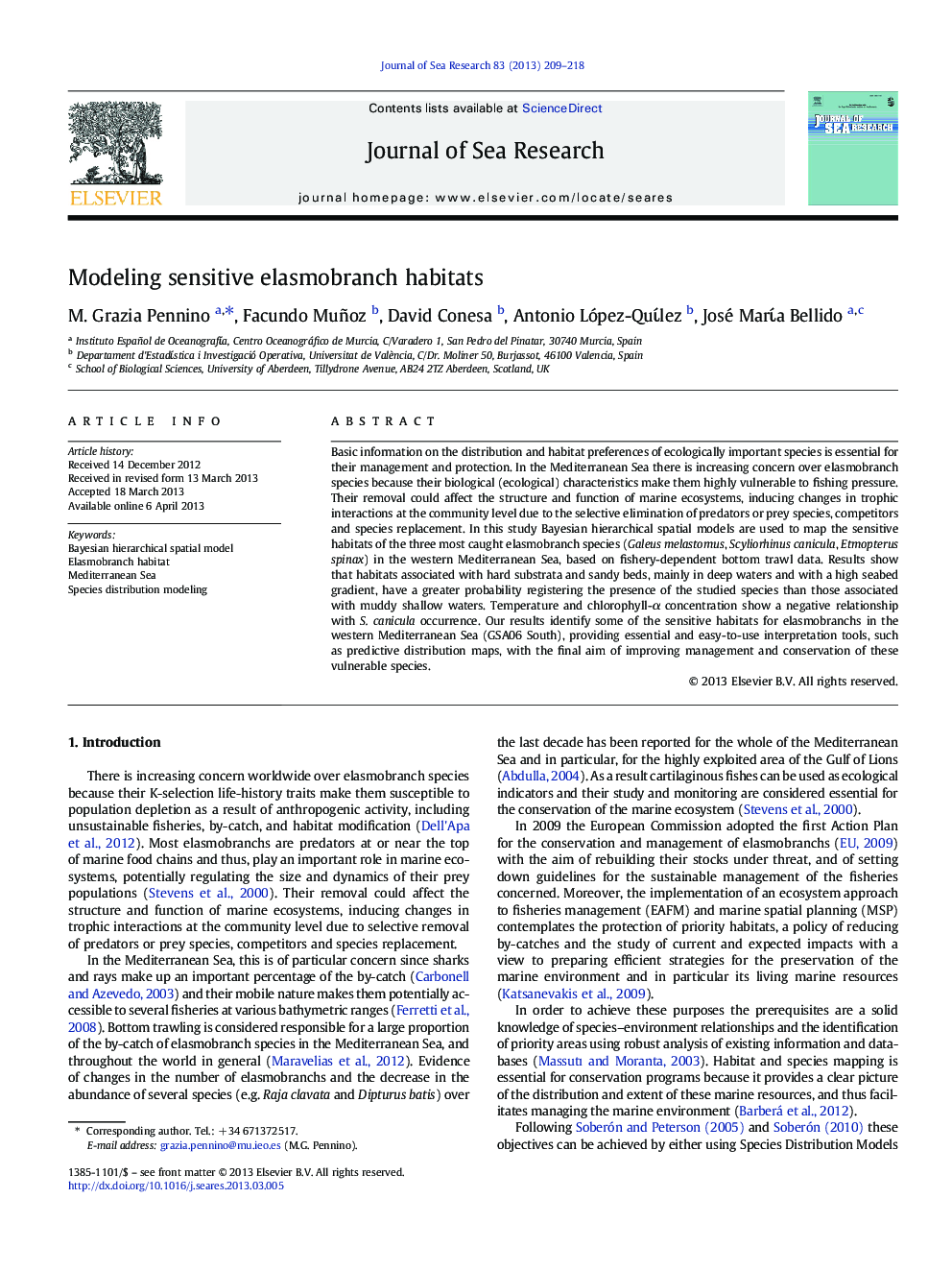| Article ID | Journal | Published Year | Pages | File Type |
|---|---|---|---|---|
| 6387494 | Journal of Sea Research | 2013 | 10 Pages |
Abstract
Basic information on the distribution and habitat preferences of ecologically important species is essential for their management and protection. In the Mediterranean Sea there is increasing concern over elasmobranch species because their biological (ecological) characteristics make them highly vulnerable to fishing pressure. Their removal could affect the structure and function of marine ecosystems, inducing changes in trophic interactions at the community level due to the selective elimination of predators or prey species, competitors and species replacement. In this study Bayesian hierarchical spatial models are used to map the sensitive habitats of the three most caught elasmobranch species (Galeus melastomus, Scyliorhinus canicula, Etmopterus spinax) in the western Mediterranean Sea, based on fishery-dependent bottom trawl data. Results show that habitats associated with hard substrata and sandy beds, mainly in deep waters and with a high seabed gradient, have a greater probability registering the presence of the studied species than those associated with muddy shallow waters. Temperature and chlorophyll-α concentration show a negative relationship with S. canicula occurrence. Our results identify some of the sensitive habitats for elasmobranchs in the western Mediterranean Sea (GSA06 South), providing essential and easy-to-use interpretation tools, such as predictive distribution maps, with the final aim of improving management and conservation of these vulnerable species.
Related Topics
Physical Sciences and Engineering
Earth and Planetary Sciences
Oceanography
Authors
M. Grazia Pennino, Facundo Muñoz, David Conesa, Antonio López-Quίlez, José Marίa Bellido,
